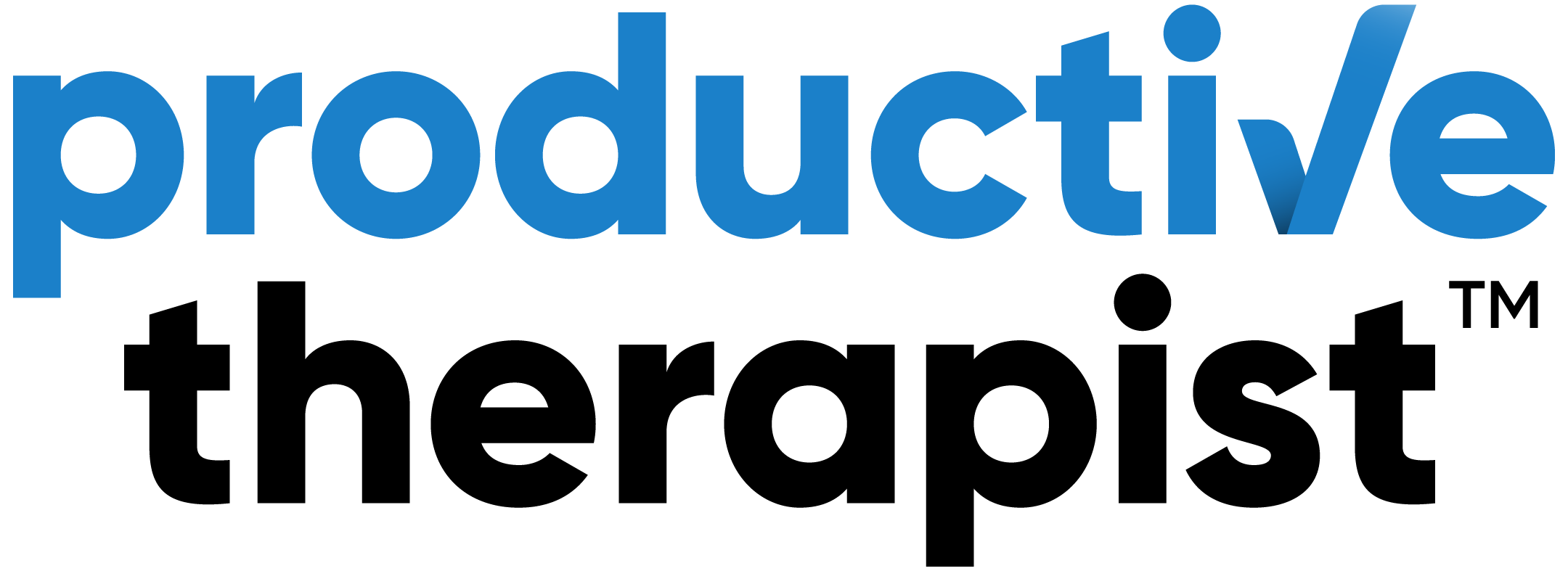Uriah: Hi, I’m Uriah, welcome to the Productive Therapist podcast, so happy to have you listening today. I’m here with my co-host and world class virtual assistant, Tracel. Hi!
Tracel: Hi, how’s it going?
Uriah: Good, good. Is it snowing in Utah?
Tracel: No, it has been such a dry winter.
Uriah: Right?
Tracel: It’s terrible. Terrible.
Uriah: So I’m headed there soon for a little road trip to see the national parks, and I guess it’s a good thing that the weather’s a little bit warmer, but not such a good thing that there’s not as much snow because that’s fun. Right?
Tracel: Right. Yeah. If you’re a skier, people are not too happy right now.
Uriah: That’s true. That’s true. We’re not going to be skiing too much, so I think I’ll be fine. All right, as always, I have a question for you.
Tracel: Mhmm.
Uriah: So have you ever heard of Profit First or Mike Michalowicz?
Tracel: I’ve heard of Mike Michalowicz. I know he’s an author, and I’m going to assume Profit First is a book, but that is the extent of my knowledge.
Uriah: OK, so you’ve heard of this this person.
Tracel: Yes.
Uriah: OK, great. Mike Michalowicz, honestly, is one of my favorite business authors right up there with Donald Miller. And who else would be on that list? The first one that comes to mind is Gary Vaynerchuk, but Mike Michalowicz is one of those people that is pretty prolific, and if I ever see that he has a new book I instantly preorder it. Oh, Michael Hyatt is the other one I was thinking of, I buy all of his books as well.
Tracel: Mhmm, yes.
Uriah: But I’ve read well, I’ve read all of Mike Michalowicz’s books: Profit First, The Surge, The Pumpkin Plan. Clockwork was amazing. And what’s the other one I’m thinking of?
Tracel: Fix This Next.
Uriah: Thank you! Fix This Next. That’s right. But Profit First was the very first one that I read. And I’m going to say it’s been the most impactful for my business.
And I’m always telling my coaching clients and our Productive therapist members about Profit First because it really makes a huge difference.
Tracel: I’m excited to hear about it.
Uriah: Yeah, I’m glad to tell you! I thought this would be a good format for me to explain it to you because you haven’t necessarily heard of it or been immersed in it, and you can ask genuine questions that come up.
Tracel: Perfect.
Uriah: So what is Profit First? It’s basically a cash management strategy that guarantees a healthy and profitable business.
And I’ll explain some of the basic concepts to you. It’s really quite simple, but at the same time, very powerful, and it works well with human nature, because Mike in the book goes into detail about how most business advisors and financial advisors and accountants tell you how to evaluate your business and manage your money and how they often don’t really work on a day-to-day basis.
Because what all of us do as business owners is we check our bank balances. That’s what we do. And if there’s money, then we’re like, “OK, we’re doing good!”
Tracel: Right. (laughs)
Uriah: And if the account is at $4 we are like, “Oh, no, we need to do something different here!” (laughs)
So this works well with the natural tendencies of most business owners. But it’s also a system that tells you more or less what to do with your money. So that’s nice.
Tracel: Which is smart, right? Why go against what human nature is? Devise a plan that works with it! (laughs)
Uriah: Well, that is true. Very, very good call there, Mike. So with Profit First, I have a specific plan on how I manage my business finances every month based on percentages that I’ll break down for you a little bit. But it ensures that I always have enough money to pay my taxes (super important one), as well as my expenses, and pay myself.
But most important, it ensures that my business is actually consistently making a profit and true to the title, that that is prioritized, and that that comes first.
Tracel: Right, right. Makes sense.
Uriah: So every two weeks I follow the Profit First model. So once payroll is completed, then I start to transfer money from the “income account” to the other accounts based on certain percentages.
And the essential idea is that you set up 5 separate accounts, which is quite a bit more than most businesses have. You know, right off the bat you usually have maybe 1, maybe 2 accounts.
But this has you set up 5 for specific purposes, and then I actually nicknamed them in my in my bank app so I know what’s what!
The 1st is the income account. And that’s pretty self-explanatory, that’s where all of the new income lands.
The 2nd is the profit account where you transfer the profit.
The 3rd is the tax account.
The 4th is operating expenses
The 5th is called owner’s compensation.
So at any given time, I can look at my bank balances and see what I have in the income account, profit, tax, operating expenses, and then owner’s comp. So that’s the simple breakdown.
Tracel: And when you see it like that, it seems really simple. But I can see how it would be really, I think it’s over used, but life changing and business changing to implement this strategy.
Uriah: Yeah. I’ll give you an example, too, that just gives me a sense of control and calm, is that I actually went to pay my business credit card this morning, and it was just under $8000, which is a large amount.
Tracel: Sure.
Uriah: And so, if I wasn’t using this model, I probably go immediately look at my income account and hope and pray that I had enough money in order to pay it –
Tracel: Right.
Uriah: – but what actually happened is I just popped over and looked at the operating expenses account, and I saw that there was more than enough money in that account to cover that credit card. So click, click. All done. And no concern or worry. Super nice.
Tracel: Yeah, that sounds fantastic.
Uriah: So one thing I want to mention is that with this system, for anybody is not using it, or somebody that is listening to this and has heard of Profit First, but has not been able to jump over the hurdles to get there, honestly, even though the ideas are simple, it does take a bit of effort to literally go to the bank, set up these accounts, and then change the way you’re thinking about and operating with your money.
But I can tell you, if you can get over that hurdle, it’s super easy.
And I can think of a couple of coaching clients that I was talking to about this and my recommendation to them. And Mike also says this, too, is that if you don’t implement the whole thing all at once, like faithfully to the T, what you should do is go instead of one more account, just make one account that’s a profit account, so that the next time you run payroll, whether it’s just for yourself or for your employees, you take a certain percentage, even starting with 1%, just transfer that over to the profit account and kind of get yourself started.
So that’s a good tip.
Tracel: Right, that sounds like a good idea.
Uriah: And the book has this thing called The Instant Assessment, which is really helpful in figuring out what your percentages should be. And it kind of breaks down based on your, what they call “real revenue.” What percentages likely for your business size should go where. And if you Google “Profit First instant assessment,” you’ll find that document and it actually gives you some instructions on how to do that.
Tracel: That’s great, because I was going to ask you, how do you decide what percentage should fall into each of these accounts? So if you can get that assessment, that would take some of the stress out of it. Trying to figure out what’s going to work best for your business and takes the guesswork out of it.
Uriah: Yeah, it also helps you see what you’re actually doing now, and then see how far off you are from where you should be.
My favorite part, honestly, of Profit First is what’s called the quarterly profit distribution.
Tracel: Mmhmm.
Uriah: So like I said before, every two weeks we run payroll, and then I transfer a certain percentage of the profit into that account. And then I just let it grow – sit there, and grow.
And then every quarter at the end of the quarter, I take half of that and transfer it as an “owner’s draw” into my personal account.
And the instructions that Mike gives in the book is this is your fun money, essentially. This is what you should do to reward yourself for running a healthy, profitable business.
Tracel: Nice.
Uriah: If you have debt, you use that to pay off your debt, and then there’s other things you can do with it, but the idea is that you get to reward yourself, which is pretty cool. And then the first time I did this, I was super excited and actually sat my kids down and I give them a little business lesson, which they get from time to time. (laughs)
Tracel: Sure, they should!
Uriah: Having me as their dad, yeah. (laughs) And I talk to them about what profit is, what a profitable business looks like, and explained Profit First to them.
And then I gave them both an envelope and said, “This is your portion of our business profit distribution.” And they were pretty stoked, it was like $40.
Tracel: That is amazing!
Uriah: Yeah, it was great. And do whatever with it that you want, right? It’s yours.
Tracel: That’s cool.
Uriah: So that was pretty cool. And then, at some point, actually I’ve already started to do this, but at some point I’m going to involve them a little bit more in helping me operate the business just in ways that they can feel like they’re contributing and not just using dad as a cash tree. (laughs)
Tracel: Right, and what a great thing to teach them. You and I have talked about this before, that some of those basic things are not taught in school anymore, like how to balance a checkbook. And, you’ve mentioned personally about saving money and what you wish you had known that you could be a millionaire by 25 or whatever that is if you had known that. But nobody teaches that in school.
Uriah: Yeah, true.
Tracel: And so you showing your kids how to do that and to have a profitable business, that is invaluable.
Uriah: Yeah, I hope they run with it. (laughs) Or at least they’ll know some of the basics, so that’s good.
Tracel: Sure, sure.
Uriah: So that’s basically the essence of Profit First. And I think I started doing this about 3 or 4 years ago, and I use it for my counseling practice, and I also use it for Productive Therapist. And I would not want to operate without this framework.
Tracel: That’s great.
In a few months, we’re launching a new course the Tracel and I are finishing right now, which is called “Hiring Your Assistant.” It’s going to be awesome.
Tracel: That’s right. Yes.
Thanks so much for listening to the Productive Therapist podcast. Bye, Tracel!
Tracel: See you next time.

